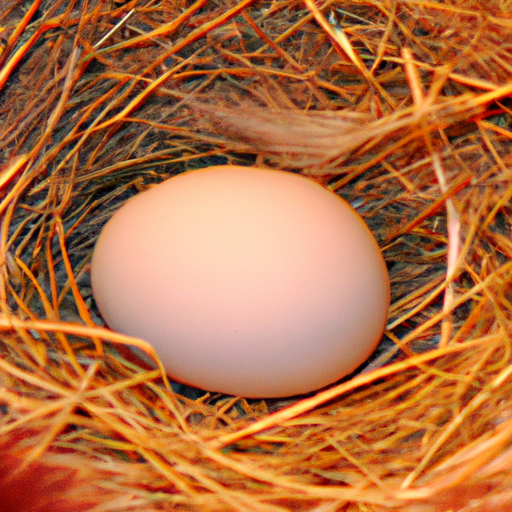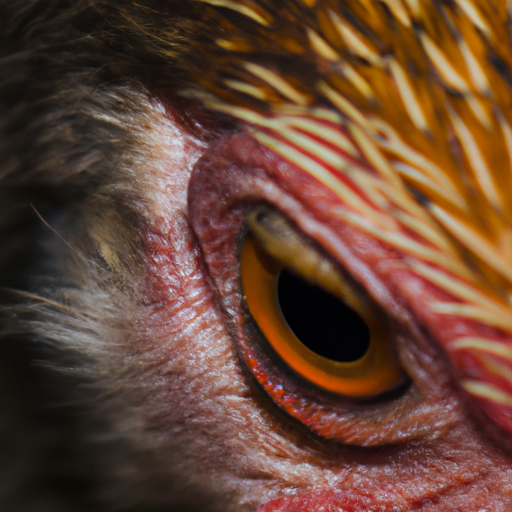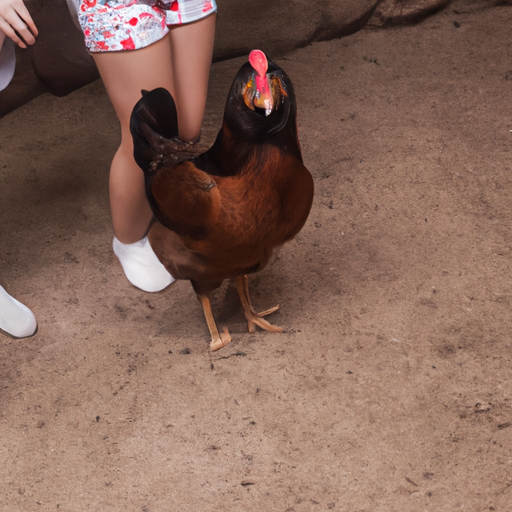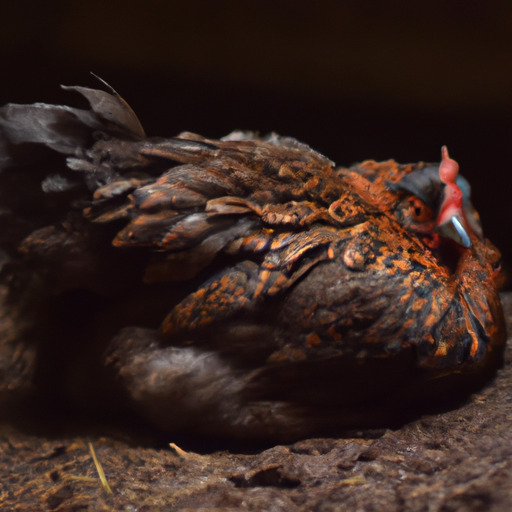If you’re a chicken owner, you may have encountered the phenomenon of broody hens. These dedicated ladies will go to great lengths to sit on their eggs, sometimes even refusing to leave the nest or pecking at anyone who approaches. While broodiness can be a natural and essential behavior for hens to hatch eggs, it can also become a nuisance if you’re not planning on expanding your flock. In this article, we’ll explore the common causes of broodiness in hens and share some effective strategies to manage it. So, if you’re ready to crack the mystery of broody hens and bring peace back to your flock, keep on reading!
Causes of broodiness
Hormonal changes
Hormonal changes play a significant role in triggering broodiness in hens. When a hen’s reproductive system starts producing higher levels of progesterone and prolactin, it often leads to the instinctual desire to incubate eggs and raise chicks. These hormonal fluctuations can occur naturally or as a result of factors such as the onset of maturity, changes in daylight length, or certain health conditions.
Environmental factors
The environment in which a hen lives can also contribute to broodiness. Factors like a dark and cozy nesting area, limited activity space, and constant exposure to the sound of chicks or roosters can instinctually trigger broodiness in hens. An environment that mimics a conducive nesting area may prompt a hen to enter a broody state, even if she is not physically capable of hatching eggs.
Excessive nesting material
A surplus of nesting material can stimulate broodiness in hens. A pile of soft, comfortable bedding material may make a hen feel inclined to nest and incubate eggs. While nesting material is important for keeping eggs protected and secure, it is essential to provide a sufficient amount without overdoing it to discourage excessive brooding.
Pecking order dynamics
Pecking order dynamics within a flock have a profound impact on broodiness. Hens higher in the pecking order tend to have a higher likelihood of becoming broody, as they often have more access to resources and tend to feel more secure nesting. Conversely, lower-ranking hens may experience higher stress levels, reducing their inclination to brood.
Mating behavior
A hen’s mating behavior can influence her brooding tendencies. If a hen has been successfully mated and has access to fertilized eggs, her instinctual drive to brood and incubate those eggs will increase. This behavior is a natural adaptation to ensure the survival of the species by providing proper care to developing embryos.
Unfertilized eggs
Hens do not require a rooster’s presence to enter a broody state. In the absence of fertilized eggs, some hens may still exhibit broodiness and attempt to incubate unfertilized eggs. This behavior can be challenging to manage, as the hen will remain committed to the incubation process despite the lack of viable embryos.
Genetics
Genetics can also play a role in broodiness. Certain breeds have a higher genetic predisposition to brooding behaviors and may frequently enter a broody state. For example, heritage breeds like Silkies and Orpingtons are known for their broodiness. Understanding the genetic tendencies of your flock can help you manage and work with their brooding patterns more effectively.
Breed tendencies
Beyond genetics, different chicken breeds have varying tendencies towards broodiness. Some breeds are more prone to brooding behaviors, while others have been selectively bred to reduce these instincts. Recognizing the breed tendencies of your hens can provide valuable insight into their likelihood of becoming broody and help inform your management strategies.
Age
Age is another factor that influences broodiness in hens. Young hens who have recently reached maturity are more prone to entering into a broody state. As they gain experience and mature further, their broodiness may become less frequent. On the other hand, older hens may exhibit broodiness more frequently as their reproductive system becomes less active.
Previous brooding experience
Hens that have successfully raised a brood in the past are more likely to exhibit broodiness in the future. Once hens have experienced the satisfaction of successfully hatching and raising chicks, they may be more inclined to enter a broody state again in subsequent seasons. Their previous success can trigger their natural instinct to reproduce and nurture.
Managing broodiness
Provide distractions
To manage broodiness effectively, it’s essential to provide distractions for broody hens. Introducing new toys, treats, or even companions can help redirect their focus and prevent them from becoming fixated on nesting and incubation. Providing environmental enrichment can keep their minds occupied and reduce the likelihood of broody behaviors.
Remove nesting material
One way to discourage broodiness is by removing excessive nesting material. By reducing the amount of soft and cozy bedding available, hens may be less inclined to nest and incubate eggs. This helps break the cycle of broodiness and encourages hens to resume their normal activities.
Adjust lighting
Manipulating the lighting conditions in the coop can influence broody behavior. Hens require a certain amount of daylight to maintain regular reproductive cycles. By adjusting the duration and intensity of light exposure, you can help regulate their hormonal levels and reduce the occurrence of broodiness. Consulting with a poultry expert can provide guidance on the ideal lighting conditions for your flock.
Collect eggs frequently
Collecting eggs frequently can discourage broodiness. Leaving eggs in the nesting boxes can reinforce the broody behavior, as the hen believes her eggs are accumulating for hatching. Removing eggs regularly can interrupt this process and discourage hens from continuing to nest and incubate.
Encourage physical activity
Encouraging physical activity can help deter broodiness in hens. Providing ample space for exercise and engaging them in activities like foraging or dust bathing can shift their focus away from nesting and incubation. Physical activity not only stimulates their minds but also helps recalibrate their hormonal levels.
Use broody coop or isolation cage
Creating a designated broody coop or isolation cage can offer a controlled environment for broody hens. By separating them from the main flock, you can lessen the influence of other broody behavior-inducing factors. This isolation can break the cycle of broodiness and encourage hens to return to their normal behavioral patterns.
Modify nesting boxes
Modifying the nesting boxes can discourage broody behavior. Installing slanted or slightly uncomfortable surfaces can dissuade hens from nesting for extended periods. Similarly, providing fewer nesting boxes than the number of hens in the flock can reduce the competition for desirable nesting spots and minimize the likelihood of broodiness.
Introduce new flock members
Introducing new flock members can help manage broodiness. The presence of unfamiliar chickens can disrupt the established pecking order dynamics and reduce the propensity for broodiness in higher-ranking hens. Adding new chickens to the flock can create an environment that is less conducive to broody behaviors.
Consult with a veterinarian
If broodiness becomes a persistent issue in your flock or if you have concerns about certain hens, it is advisable to consult with a veterinarian experienced in poultry health. A professional can assess any underlying health issues, provide guidance on specific management techniques, and recommend appropriate interventions to manage broodiness effectively.
Selective breeding
Selective breeding is a long-term management strategy to diminish broody tendencies in your flock. By intentionally breeding hens that exhibit lower levels of broodiness, you can gradually reduce the occurrence of this behavior in subsequent generations. Consult with experienced poultry breeders or organizations for advice on selective breeding programs tailored to your specific goals.
By understanding the various causes of broodiness in hens and implementing appropriate management strategies, you can effectively address and reduce broody behavior within your flock. It is important to remember that broodiness is a natural instinct for chickens, and occasional broody periods can be a positive aspect of their reproductive cycle. However, by promoting a balanced and healthy flock environment, you can ensure that broodiness does not negatively impact the overall well-being and productivity of your hens.




